Naples: Tanta roba!
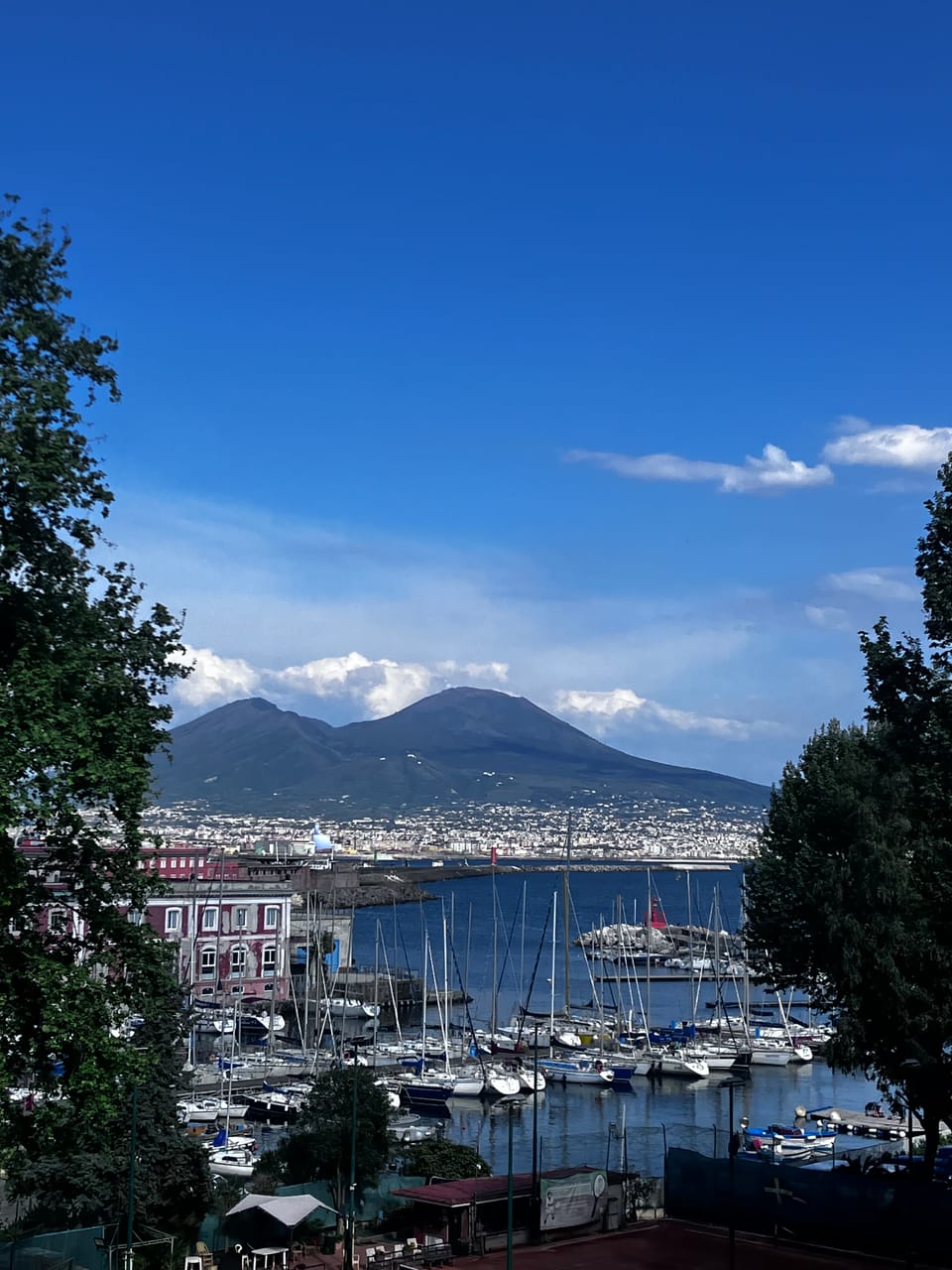
Tanta roba is a very common and beloved phrase in Italian due to its versatility. It can directly translate as “a lot of stuff”, “too much stuff”, something that is “amazing, cool, great, impressive, extraordinary". Nothing better than all these meanings sums up Naples.
It is often remarked that Italy is addictive, but that is nowhere more obvious than in Naples, where the longer you stay, the longer you wish to stay. Naples is a place of contradictions, creativity, dynamism, and radiating energy. It is a state of mind, a way of coping with life and its difficulties. It is rough, disordered, confusing, and liberating at the same time. If you can take it on the chin upon arrival, and not feel fazed and intimidated by the crowds, noise, shouting, and exaggeration in every sense, you will hopelessly fall in love and desire the city forever.
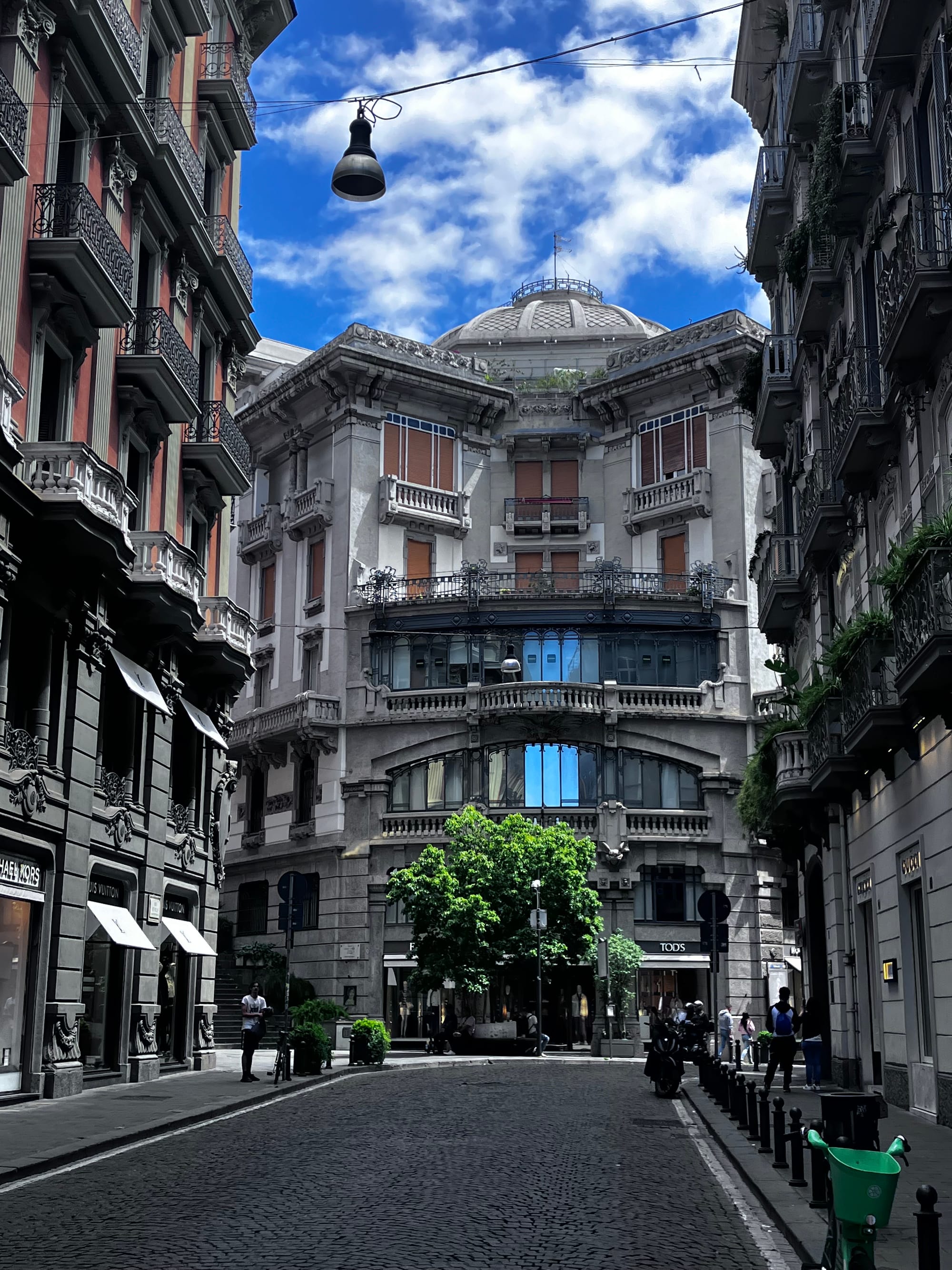
Naples is teeming with sounds, colours, shouts, smells, extravagant gestures, cars and mopeds honking, it is all an overwhelming array of sensory impressions. People don't care much for the ideas of personal space, or respectful distance. They brush against you, graze your elbow, shove you in crowded streets, not spitefully or intentionally, but simply because you must be assertive and claim your space in public, in order to reach anywhere. Traffic? Don’t, just don't. Take a taxi because a lifetime wouldn't be enough to understand the arbitrary rules or the lack thereof while driving in Naples.
There is so much in Naples, it is an abundant, generous, hyperbolic city, with ancient layers, the dynamism of the youth, and all the modern vices contained within it. You long to become a writer, to turn into a poet overnight, or into a talented painter to capture every little detail of your visit. You realize immediately that the regular touristy paraphernalia, a notebook, a camera, curiosity, and good shoes for walking will simply not do here. Ordinary life has the magic aura of an old film in Piazza del Plebiscito, as well as in Spaccanapoli, or on Via Toledo.
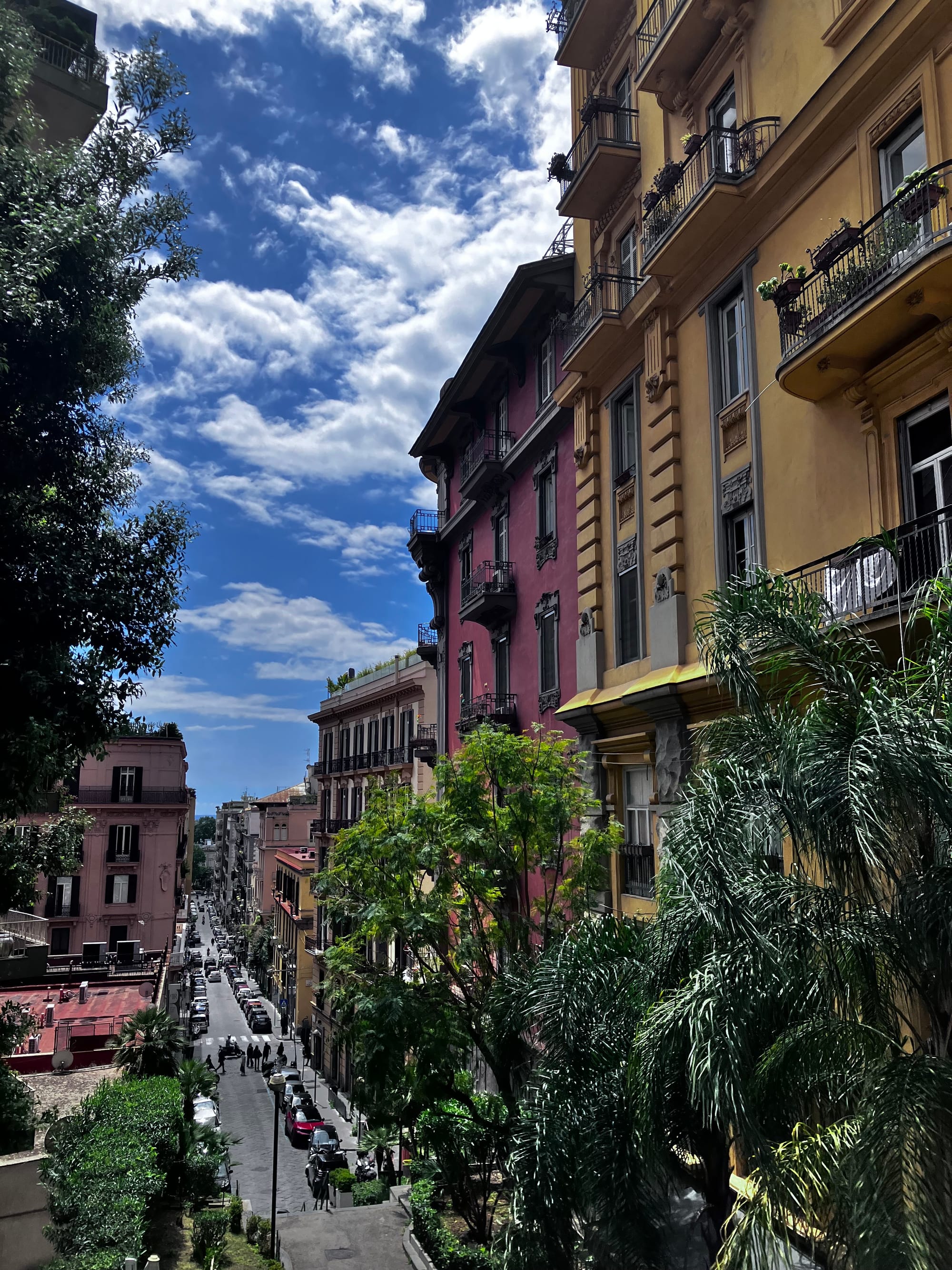
You quickly notice improvised religious shrines at almost every corner, an unexpected sacral growth within the urban fabric of the city, a humble gathering of candles, plastic dusty flowers, an obligatory icon of the Madonna, with or without baby Jesus, and a plethora of pictures, faded, new, colorized, or black and white. Pictures of the departed beloved family members, who are dearly missed, and who are still in someone's thoughts and prayers. These votive offerings are stirring conflicting emotions, they are tacky, yet touching and poignant, naive and endearing at the same time. They underline the timeless importance of the family, both dead and alive, that is so deeply embedded into the mentality of the southern Italians.
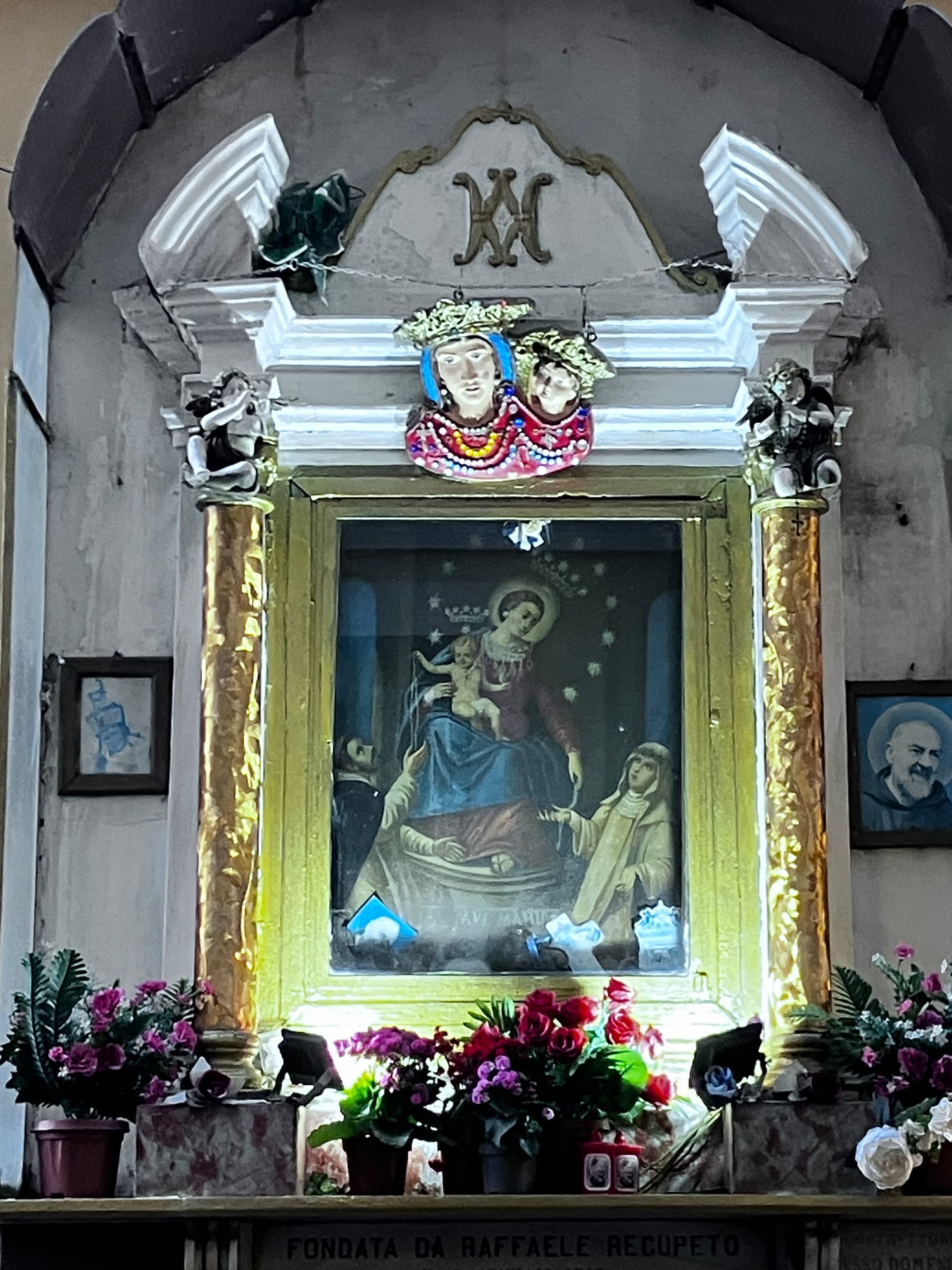
The city's patron saint is San Gennaro, who regularly performs a somewhat bizarre miracle of turning his dried blood into liquid, which is seen as a good omen by the citizens. Religion goes hand in hand with superstition here, and the prevalent souvenir you can get absolutely everywhere is a lucky charm in the shape of a bright red horn. They are called curnicelli, and they must be red, curved, and bought to you by someone else, to have their full beneficial effect. We got a few, just to be on the safe side.
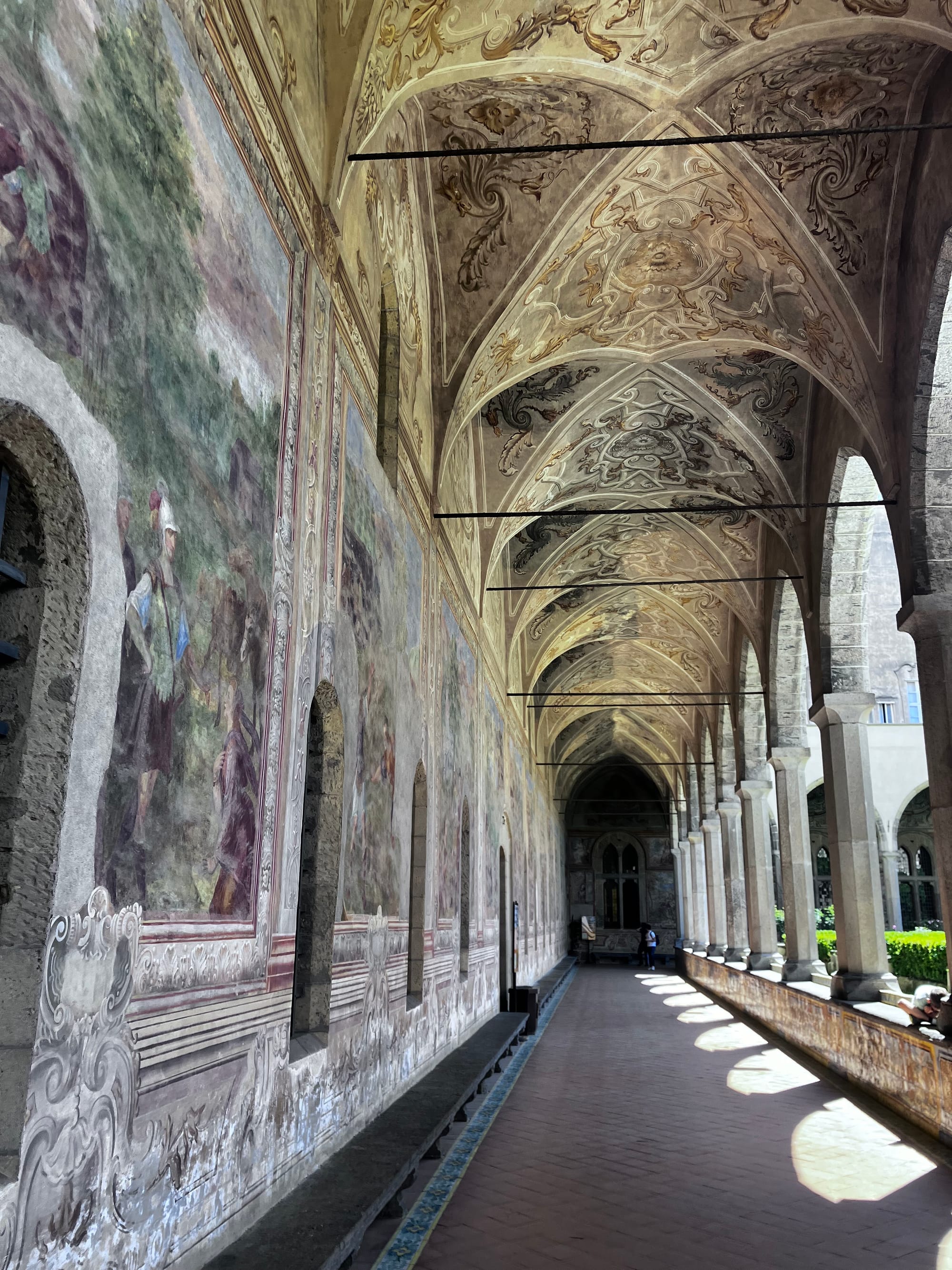
The people of Naples are its greatest asset and its biggest eccentricity. It is a belief universally accepted all over the Boot, that they are the friendliest and supremely talented for music. They are spontaneous, natural talkers, jesters, and they easily put you at ease. They are overly generous, always offering you food, compliments, any kind of help, they want everyone to be happy. If you happen to just seem confused while on a bus, every single passenger will unite to help you and guide you in the right direction. However, the direction will be wrong in the end, suggesting that their effectiveness might be somewhat lacking, despite their best intentions. They also overdo everything, affected by illusions of grandeur they will accept only a Rolls Royce Phantom hearse as a suitable last ride. They exaggerate in everything, and I relate to that.
They are very skilled craftspeople, and if you are ever in need of an extremely niche product that needs to be made to undergo the most demanding quality control and scrutiny, you will know where to find it. Work of art umbrellas, custom-made male shirts, ceremonial clothes, the brightest ceramics, cameo jewelry, tiny and elaborate figurines that form Nativity scenes called presepi. This is an Italian Christmas decoration that depicts the birth of Jesus. Ancient streets of Naples are full of artisan shops with such treasures.
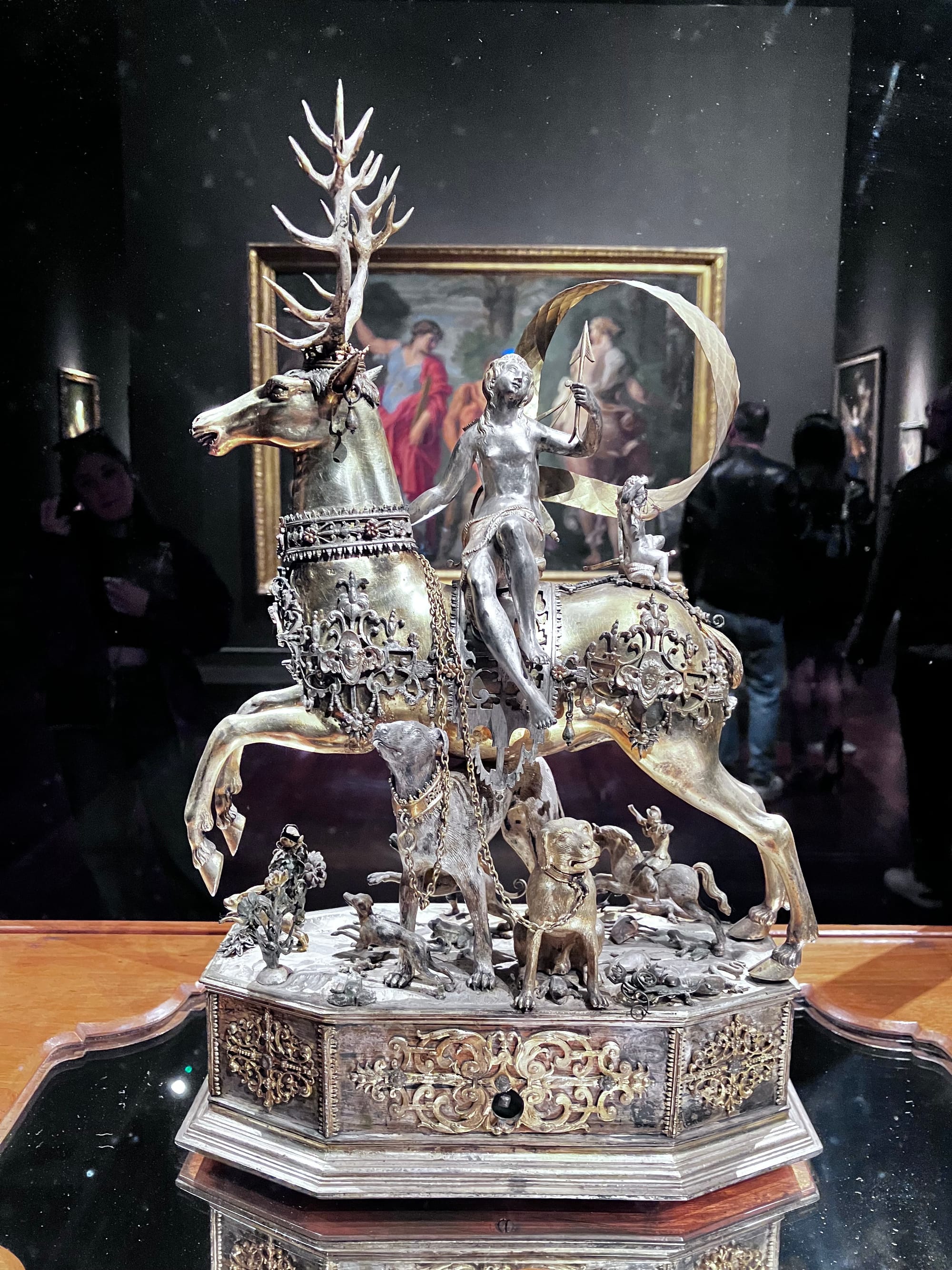
Even young Neapolitans have clunky names you only read on the obituary notices, hopelessly old-fashioned, traditional, inherited from their nonni (grandparents), quintessentially Italian names, such as Peppe, Ciro, Pasquale, Carmela…Women of Naples are exotic beauties, sensual, impossible to overlook, with big, curly, naturally shiny hair, dressed in black leather and wearing lots of fake golden jewelry. They are modern renditions of femme fatale Sophia Loren, their famous native daughter. The men are just as we imagine a Southerner, energetic, dark-haired, but with a lot of unusual patterns and eccentric lines in their always perfectly trimmed hairstyles. They are unafraid of expressing their creativity, individuality, masculinity and sensitivity. The quality of life is lower when compared to the rich north of Europe, but it is my subjective feeling that the quality of relationships and mental health is way higher in Naples.
They say that the most interesting people are the ones who had tumultuous, not necessarily straightforward, comfortable, or easy lives. This applies to cities as well, and Naples has had its fair share of wounds. Naples was bombed countless times in WWII. Firstly, at the beginning of the war by the Allied forces. They launched heavy raids to destroy Italian sites of combat importance but caused severe damage and heavy civilian population loss. In the irony that only life can stage, after the liberation of the city, Naples was again destroyed by the scorched earth policy of the retreating German Army. The departing Germans had blown up all the water supplies and sewers, leaving hundreds of thousands of Neapolitans without anything to drink. Then came a typhus epidemic, a food crisis, and starvation. Three riders of the apocalypse. To survive all that, and to remain cheerful, helpful, open, not in the least bitter or resentful, but welcoming, and full of life, is the ultimate badge of honour of this city. Naples is the Victory City.
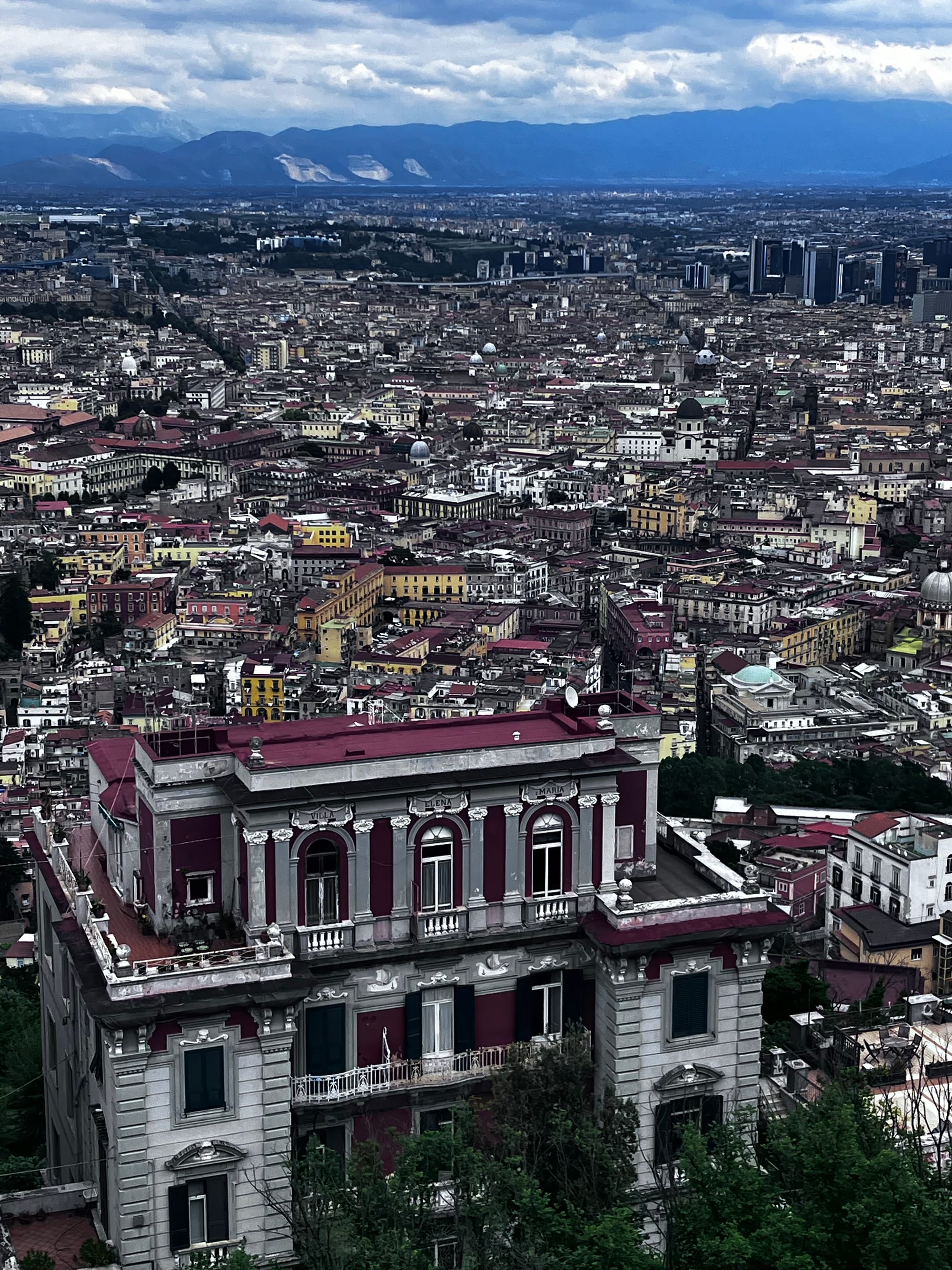
Naples is full of fake merchandise, all the sidewalks are crowded with street peddlers, offering their garish knock-offs. It is all fake, bags, shoes, belts, even make-up and cosmetics. Street bazaars sprout randomly on every little square, with stalls full of famous brands for a couple of euros. Stolen? Expired? Copied somewhere in the Far East? No one cares, people are happily buying, and participating in the shopping frenzy for luxury fashion, celebrating and enjoying being young and alive. They couldn't care less, and they are right, knowing what we know now about the ugliness and duplicity of the luxury market that is anyways all made in China.
Naples is a marginalized part of Italy, and there are very persistent prejudices that the north of the country/all of the country holds against it. In the public discourse and at the court of public judgement, it is a bad, dirty, and dangerous place, solely populated by the kinds of people you'd better run away from. Naples is a place where are rules go to die, and where obedience to any law or regulation is perceived as negotiable, and more often even worthy of absolute ignoral. Kids are driven on their parents’ laps on the front seats of the cars, helmets are a very unpopular item, and seat belts have last been used when the car in question was in the shop. The busiest roundabout becomes a pedestrian crossing anytime people wish it to be. I got a sense that the Neapolitans do all of that because they can't stand not being free to do whatever they want whenever they want it. So, before we jump to judge their carelessness or lawlessness, maybe it's better to admit that we all have this same desire inside us, we are just not in a position to let it be unfettered.
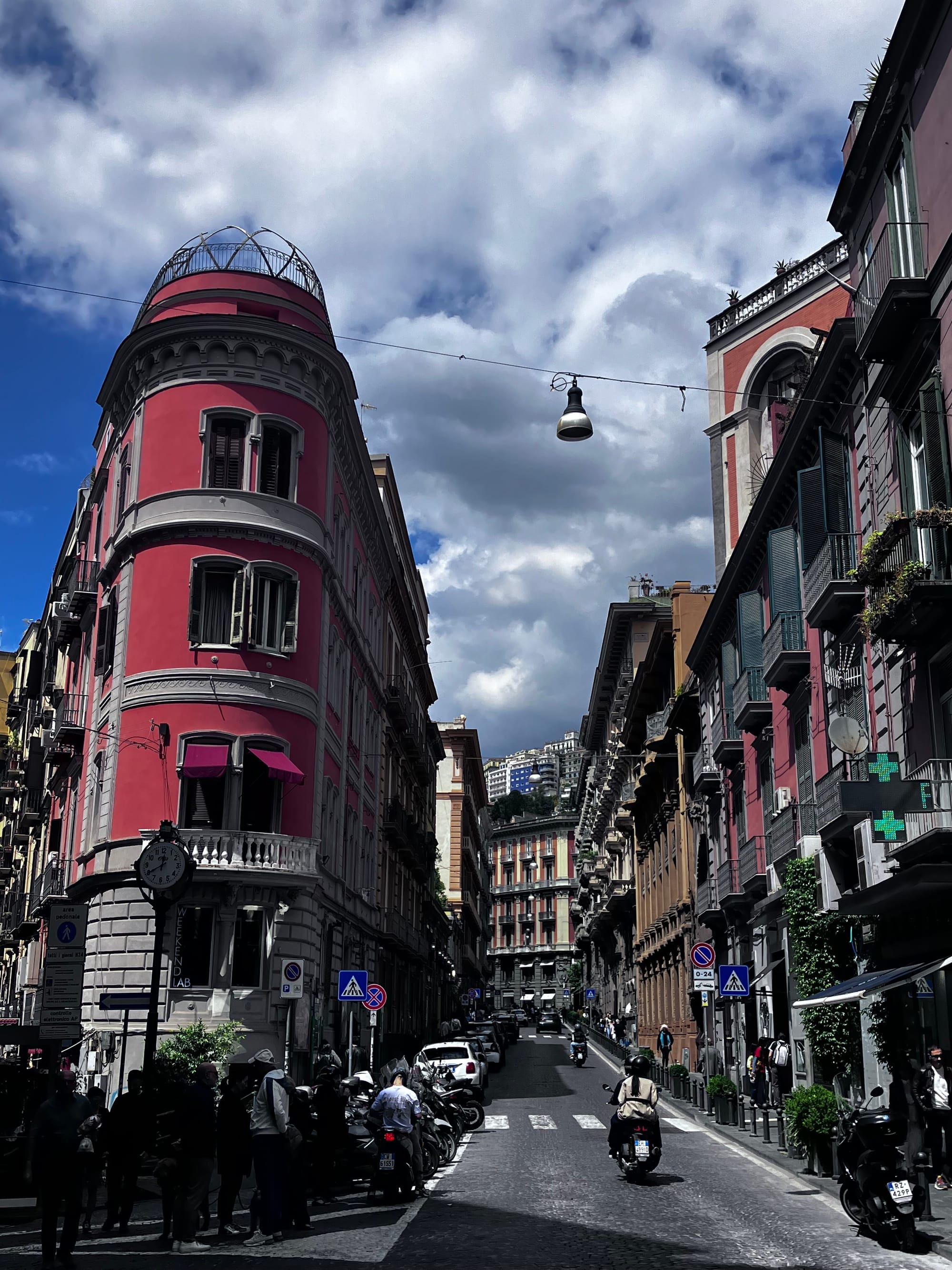
Safety is a concept that is very vague in Naples, there is never a moment of blissful and carefree strolling in the historical centre. Cars and mopeds will crazily race in the narrow medieval streets, you must stay alert while walking, and watch the corners. It can be exhausting to stay alive in Naples. It is a full-time job. There is no mafia here, but not because Naples is crime-free. Mafia is absent only because they lord over Sicily, while the region of Campania (of which Naples is the capital), has its homegrown variety of the organized crime organization. It is called Camorra, and it is as ruthless and menacing as you could imagine. Crime is deeply ingrained in the social fabric of life, but somehow it does not diminish the allure of this city. There is no sense of threat, aggression, or danger for the tourists whatsoever.
The city overlooks the bay of Naples and wherever you are, you see Mount Vesuvius. Only 9 kilometers away from the city, this active volcano had once destroyed whole towns, including the famous Pompei. It is a looming presence that played a vital role in the history of Naples and its people because living in such close proximity to a whimsical, volatile, deadly tyrant must have influenced the Naepolitans to become the way they are. Relaxed, passionate, life-loving, and living it to the full, without keeping any distance or saving themselves. Fearless and unafraid of consequences. What would be the point of it, when they could all be gone tomorrow? They say that consuming love is always entangled with the fear of its ending, the fear of losing your beloved to death. Similarly, the Neapolitan love for life is enmeshed with the realistic fear of its demise and destruction. Death and life are reinforcing each other, and feeding off each other in an almost erotic pull at the foot of Mount Vesuvius.

Don't go to Naples while being on a diet because it just doesn't make any sense. No one was meant to suffer that much. The food in the city is mostly fried, greasy, sinfully delicious, and irresistible. Yes, the Neapolitans did invent pizza, but then they also inexplicably decided to fry it. To pack more calories in it, I suppose, or just because they could. They excel at creating pasta and unique sauces, they are masters of bread making, divine seafood, and especially of cucina povera, which are dishes that were originally created out of necessity but have turned into masterpieces over time. One such trickster is spaghetti with fujute (escaped) clams, which is pasta without seafood, but only a rock from the seashore added to boiling water to fake the tangy saltiness of the clams. Seriously. You could deny the Neapolitans a lot, but never their vivid imagination. Sweets are their claim to fame, glazed sfogliatelle in all shapes and forms, colourful struffoli, Babàs soaked in rum syrup, croissants oozing with pistachio cream... My favorite meal, hands down, was breakfast.
The Neapolitans have invented the famous custom of caffè sospeso, which is a pending, delayed coffee, a few coins left for someone who will come after you, and although unable to afford a cup of coffee at a bar, still be able to have it. You pay not only for your coffee but also for someone else's coffee in advance. It is an anonymous act of charity, that summarizes the collective philosophy of Naples, and promotes social solidarity and caring for others. They don't live for themselves only but are acutely aware of the importance of community. Everyone deserves to feel dignified, and to indulge in a small ritual of drinking coffee outside, even if they are down on luck. Especially if they are down on luck. For the homeless, caffè sospeso represents a chance to use the bathroom, and to feel whole and respected, part of the community even for a few brief moments.
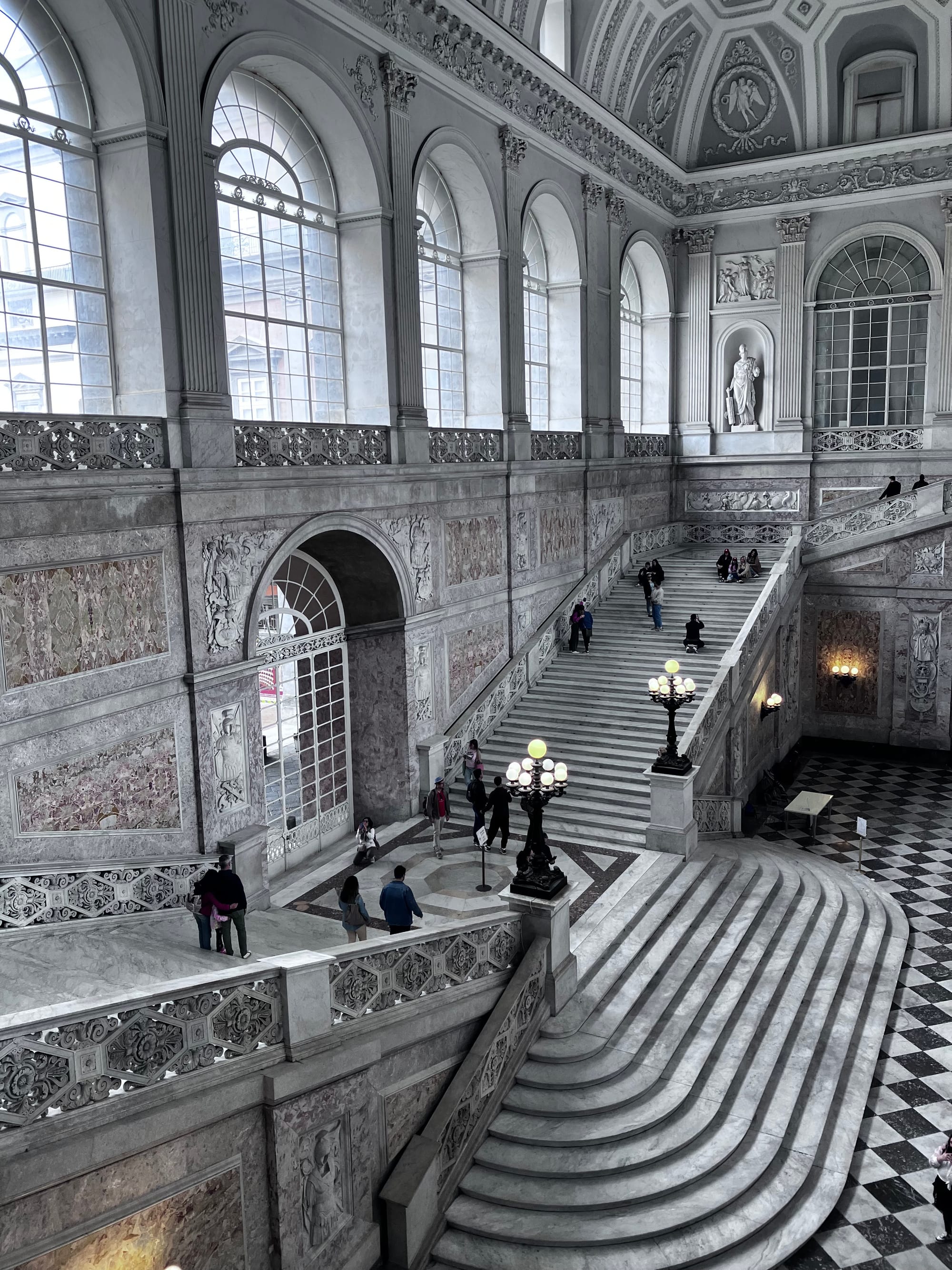
The architecture is nothing short of splendid, there are extravagant Mount Olympus-style buildings, glorious churches, royal palaces, and elegant museums. Naples was the most important cultural capital in the 18th century, way above Paris or London. It was a seat of three powerful kingdoms and royal families, the Bourbons, the Spanish line, and more recently the House of Savoy. Nevertheless, almost everything is in a state of beautiful decay now, with peeling and crumbling facades, poverty on display, and a messy garbage bin in every frame. Somehow, it all works to create a dreamy vision, pastel-coloured villas among the palm trees, elaborate statues and pillars, fountains, and flamboyant staircases that defy gravity and common sense. If cities had families, Naples and Palermo would be siblings.
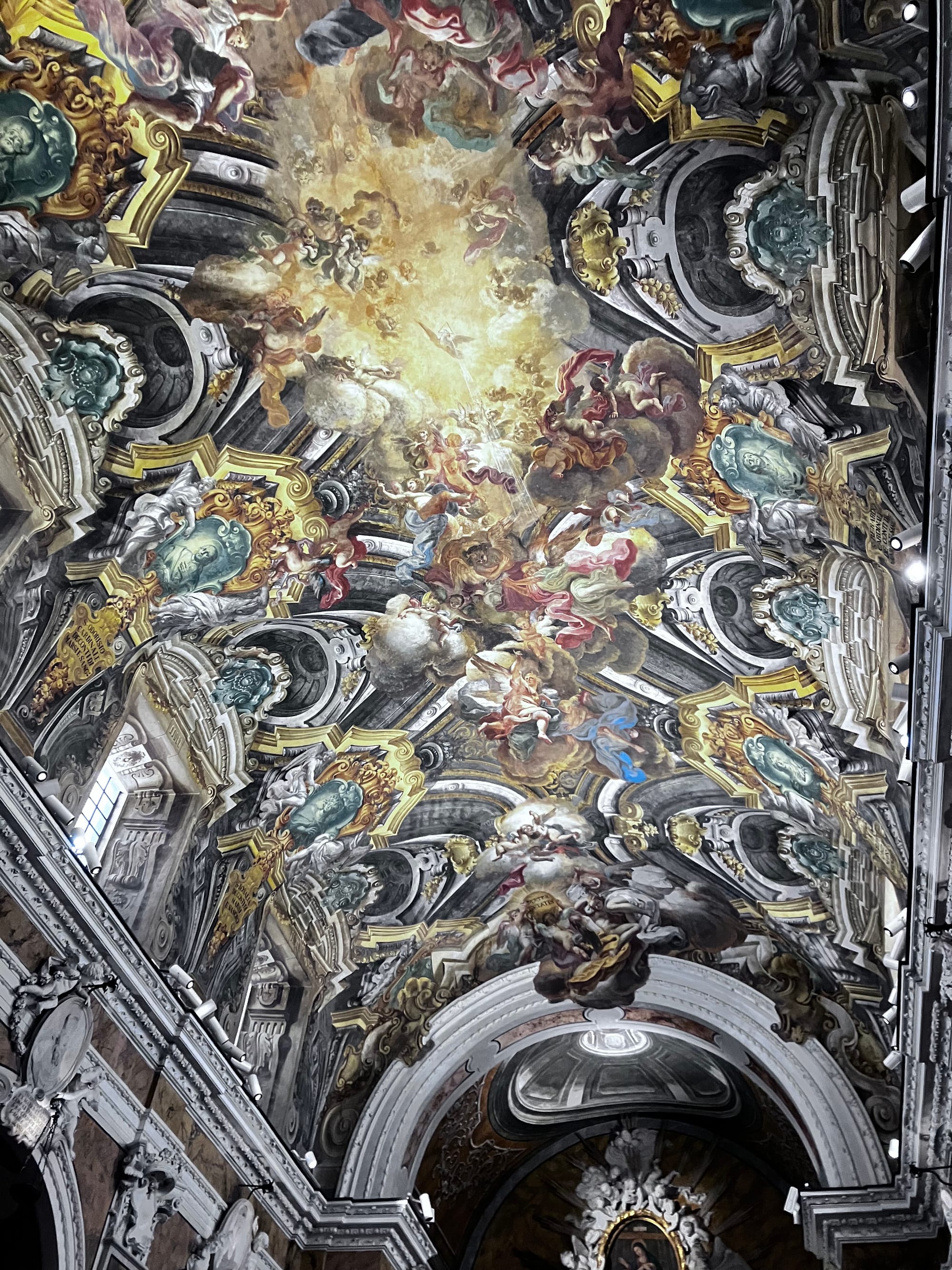
The museums of Naples are such stuff my dreams are made of. There are so many that not even the most ardent art lover could see them all in 10 days of intense work. For museums alone, Naples merits repeated visits, because such treasures, such flamboyant riches that nonchalantly await you in local museums, are unrivalled. Historically, Naples was a huge center where all the riches, trade, and kingly treasures would arrive. Lots of this former glory is still to be found and admired in Palazzo Reale, Capodimonte Museum, or the quirky Sansevero Chapel. The sculptures that turn stone into gauzy transparent veils, endless marble corridors, poignant religious paintings, trinkets made of silver, ivory, and ebony, jewels, lavish textiles of unimaginable craftsmanship, Murano glass chandeliers, and painted ceilings, make you swoon with delight.
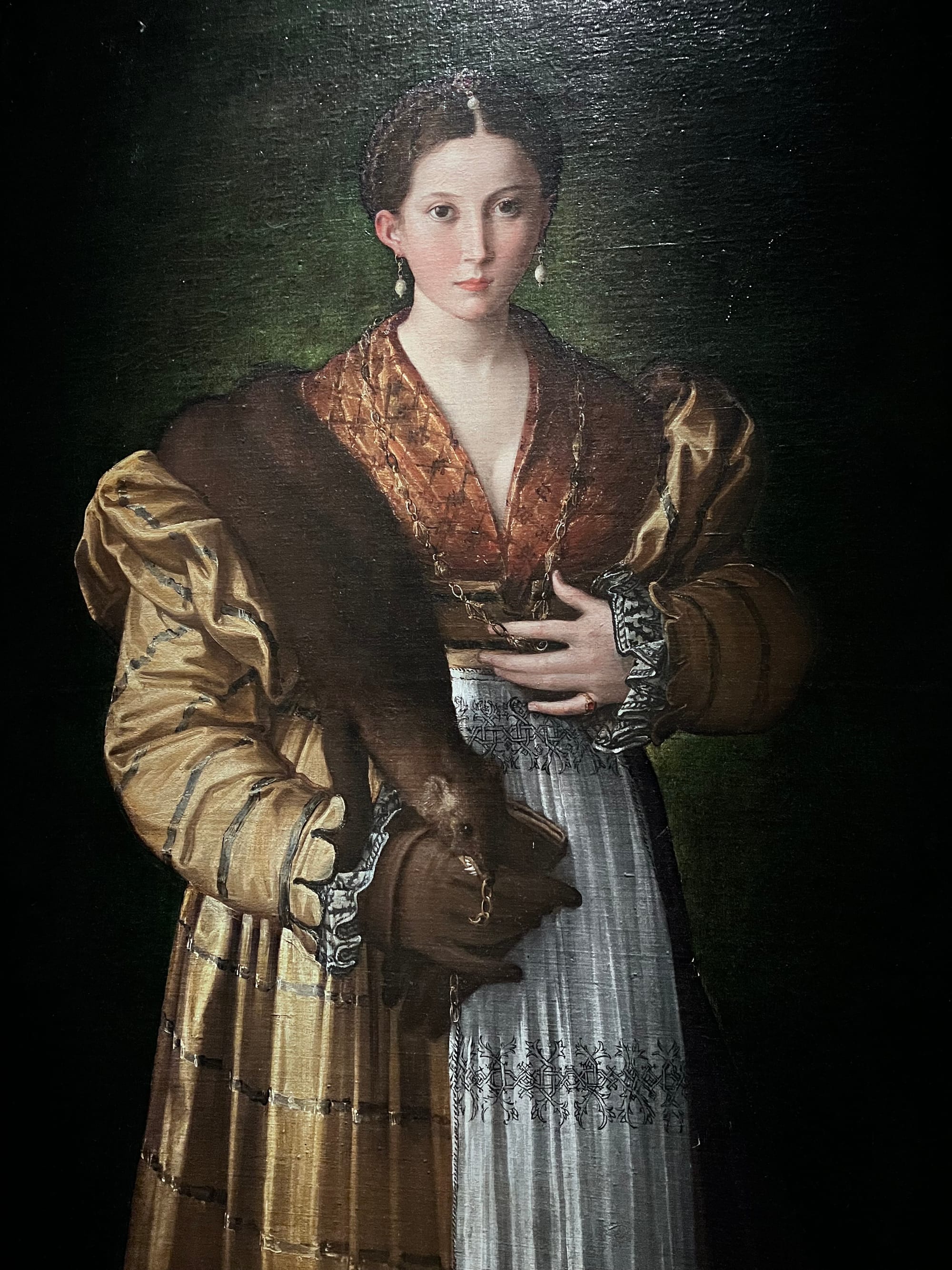
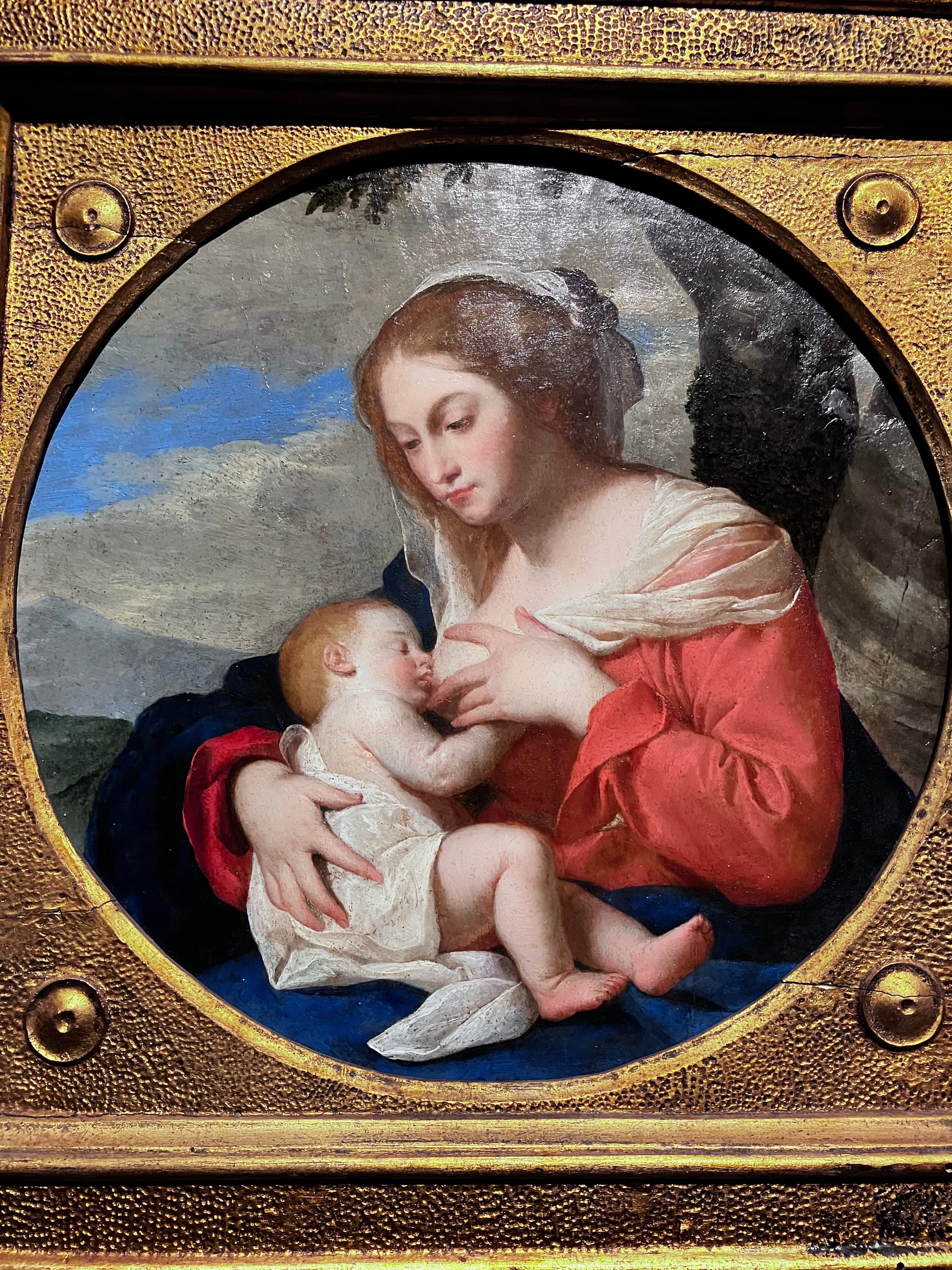
Art will forever be my therapy. The Neapolitans of all ilks, ages, professions, and levels of education, somehow intrinsically understand the value of art. Everybody participates in culture and their shared artistic heritage. Their Sunday passeggiata is to a museum, not to a shopping mall. The passeggiata is a cherished Italian tradition and ritual that involves leisurely strolls, engaging conversations, and digesting. It is the unique Italian antidote to post-meal lethargy, and it goes without saying that for a properly conducted passeggiata, you must dress impeccably, or fare bella figura. Ecco! The Neapolitans socialize among the masterpieces of Caravaggio, Donatello, Canova, and Tiziano, to name only a few. No biggie, just stretching their legs after a meal. Kids run, tease each other, shout and yell, gesture wildly in Italian, and seamlessly grow up immersed in appreciation of art and beauty. The implications of this are impossible to overstate.
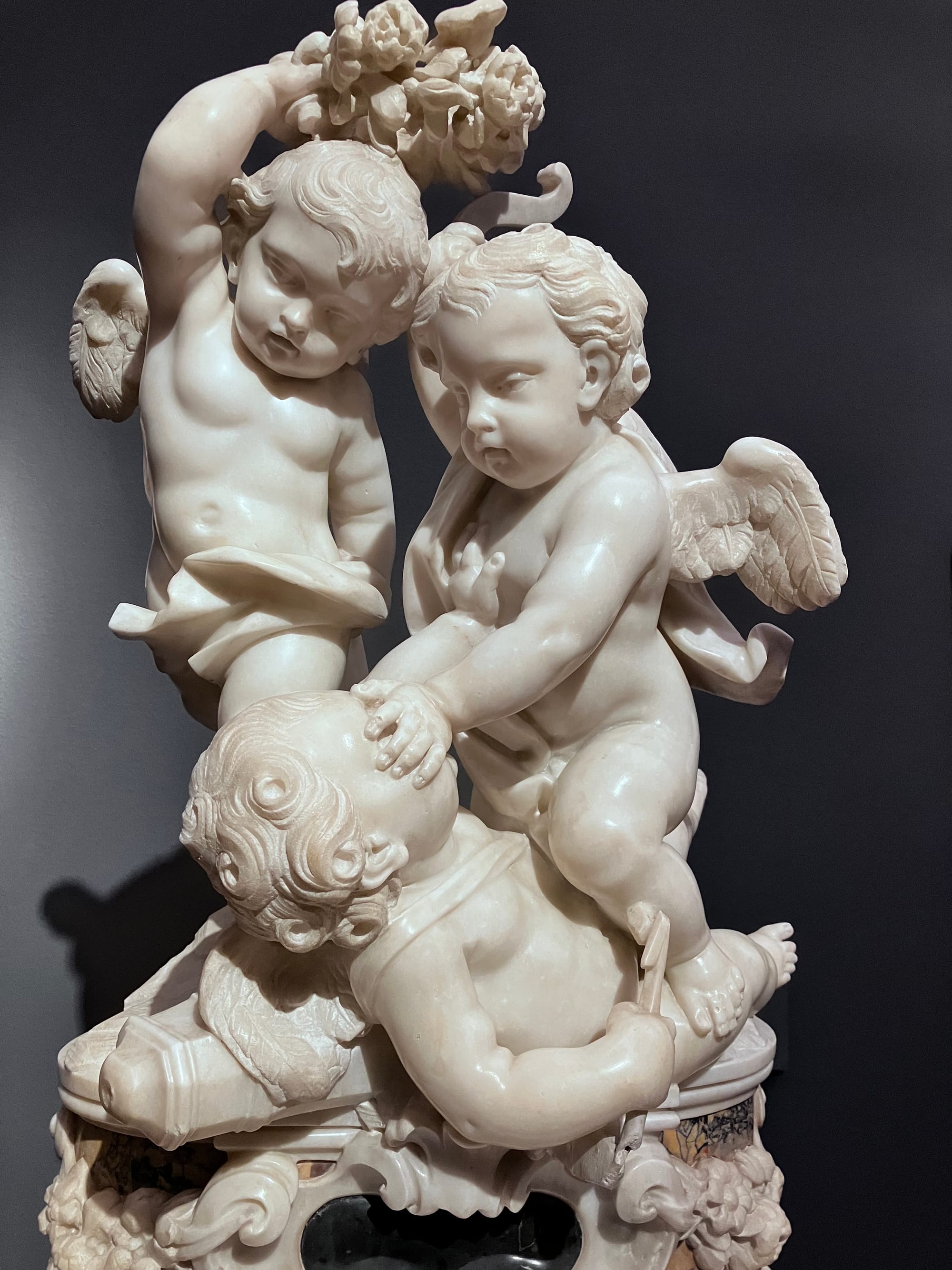
However, the art scene in Naples is not delegated to canon or the grandeur of bygone eras. In the working-class districts, such as Quartieri Spagnoli, recognizable by the fluttery blue banners stretched in narrow alleys, the contemporary street artists are active, provocative, and impossible to ignore. The walls are full of engaging art, from Maradonna murals to Banksy's philosophical and controversial stencil graffiti. Embracing graffiti reflects the city's rebellious character. I was particularly awed by the realistic murals of a local artist Jorit Agoch, in the gritty neighbourhood of Forcella, in which he paints people recognizable by the scars on their faces, signifying their shared humanity in pain. Famous, anonymous, young, old, local, or foreign, we all suffer. Their gazes follow you, unapologetic, raw, and authentic.
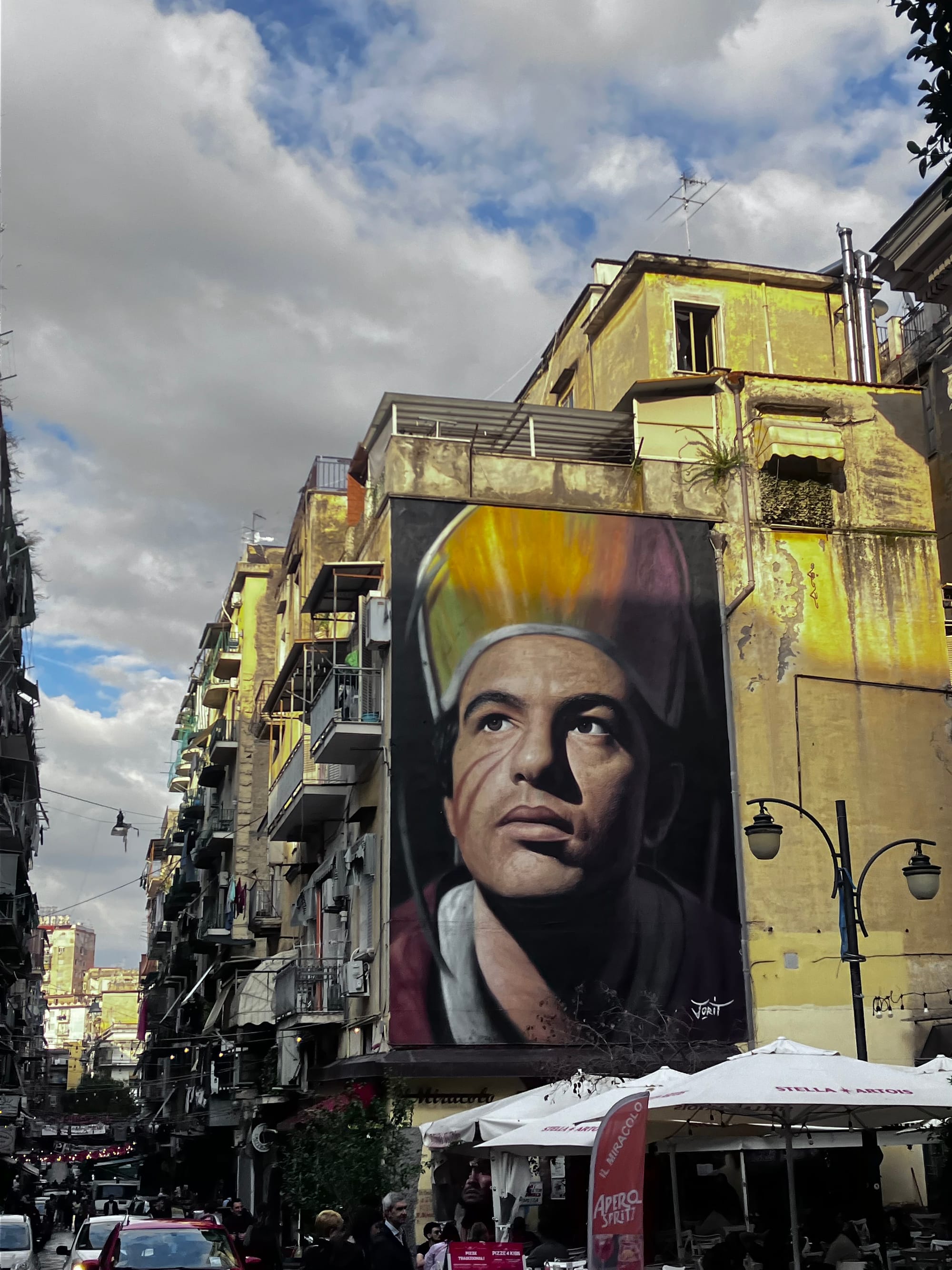
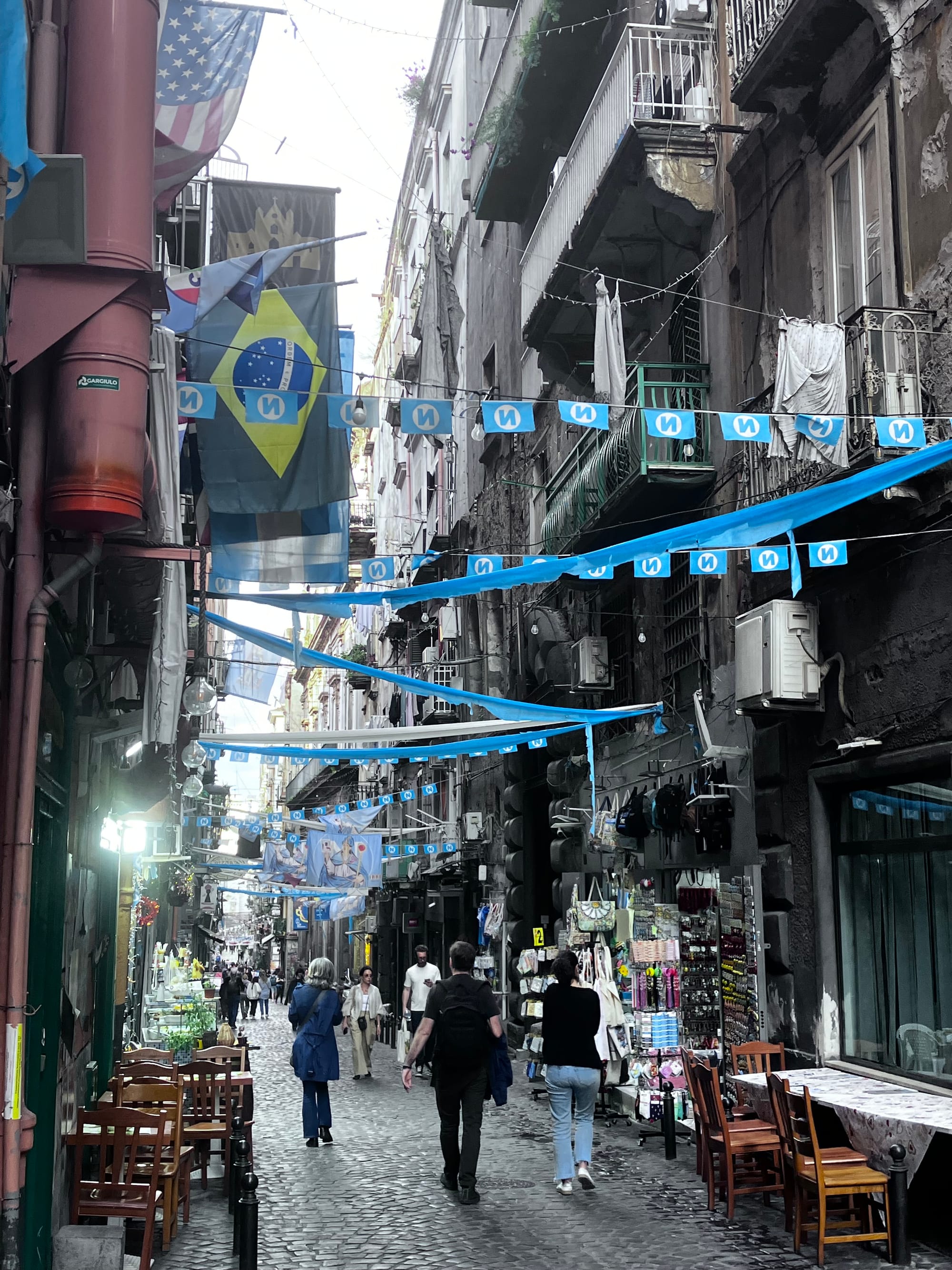
Naples is a polycentric city, spread out, and above the chaos of the old historical centre with their bassi, low houses that open up on the street, where most of the local poor reside, there is another Naples which is light years far away from the quotidian struggle. Vomero and Posilipo are decadently rich, classy, spacious, old-money, privileged neighbourhoods. Unspeakable luxury, the most coveted views, cleaner air, soft silence, curated gardens, and lots of space reside there. Life there would be one of ease and comfort, akin to the lifestyles of the kings and queens from the days of yore. There is only one thing that lords on the hills share with the peasants below: no one is picking up after their dogs.
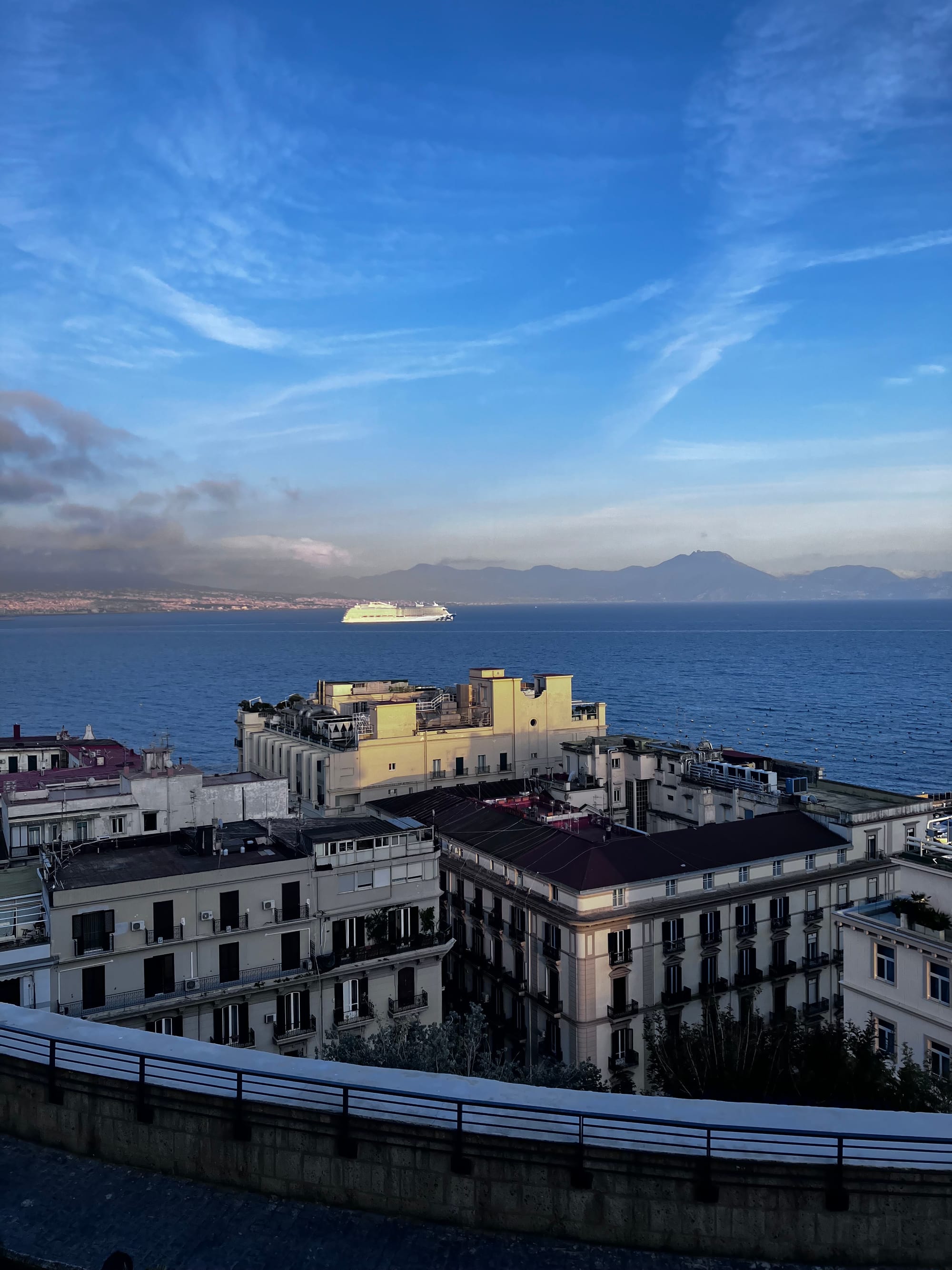
Naples is all of this and still, a city of dreams. I already love it, I adore it with that blind, irrational passion that you can only feel for someone when you are very, very young. You know the plot: you fall hopelessly, madly, uncontrollably for one of those rascals that are larger than life, gorgeous, complex, charismatic, unpredictable, mysterious, the heart of every story, the soul of every party. They are magnetic, charming, effortlessly more fun, more adventure, more life and sex appeal than anyone else. You would never have a boring day with such a guy. But you know that he is bad news, full of defects, complications, and paradoxes, you know that he has a bad reputation, and has hurt so many before you. Still, against all odds, you hope, with the fervor of your inexperienced 16 years, that he will not hurt you. I love Naples, and I will unflinchingly love it until the day I die. But I am 43 years old and I could never live there.
